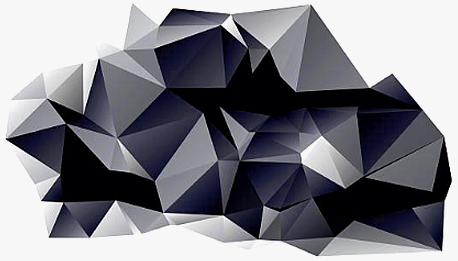Accredited InvestorsAltcoinAnatoli UnitskyAnti-Money Laundering (AML) In CryptoAPIArbitrageArtCoin TokenArticle DirectoryASICAuction Terminology GlossaryBasics of Stock Market InvestingBear MarketBest Crypto Payment Provider In the WorldBitcoinBlockchainBlockchain ConfirmationBlockchain Consensus MechanismBlockchain ForkBlockchain GlossaryBored Ape Yacht ClubBuild a Business That OutperformsBull MarketBuying SkyWay SharesByzantine Fault Tolerance (BFT) ExplainedCasascius CoinCentral Bank Digital Currency (CBDC)Centralized Crypto ExchangeCoinCoinsetCold WalletCollateralCommodity Futures Trading Commission (CFTC)Cross-Chain TechnologyCRUCrypto ExchangeCrypto GlossaryCrypto JokesCrypto Terms to KnowCrypto TickerCryptocurrencyCryptographyCryptojackingCryptounit BlockchainCryptounit GlossaryCryptounit ProgramdApp (Decentralized Application)Dead CoinDecentralized Exchange (DEX)Decentralized Finance (DeFi)Difference Between Bitcoin and EthereumDifferent Ways of Investing MoneyDigital CurrencyDistributed LedgerDo Your Own Research (DYOR)Dollar Cost Averaging (DCA)Dow Jones Industrial Average (DJIA)EncryptionERC-20ERC-721EthereumEvoScentFear Of Missing Out (FOMO)Fear, Uncertainty and Doubt (FUD)Fiat MoneyFNT Fintech CompanyGenesis BlockGlobal Unit PayGlossary of Banking TermsGlossary of Business TermsGlossary of Financial TermsHalvingHODLHot WalletHow Do I Start InvestingHow Rich is Satoshi Nakamoto?How to Create a BlockchainHow to Find Private InvestorsHow to Get Into FintechHow to Program Smart ContractsI Am Thrilled to Be a Part of This Global ProjectInitial Coin Offering (ICO)Initial Public Offering (IPO)Initial Token Offering (ITO)Innovation Basalt TechnologyInnovative Transportation TechnologiesInternational Bank Account Number (IBAN)Investing in Gold Mining StocksInvesting in Gold MiningJagerJoy of Missing Out (JOMO)Know Your Customer (KYC)LedgerLiquidity in CryptocurrencyMaker and Taker Fees in Crypto TradingMarket Capitalization (Market Cap)Meme CoinMetal Credit CardMetaMaskMillenials Now Have Access to Generational WealthMy Best Investment EverNew Digital EvolutionNFT GlossaryOff-Chain TransactionsOn-Chain TransactionsOpen Edition NFTPeer-to-Peer (P2P)Personal Loan GlossaryProbably the Best STO on the MarketProof of Stake (PoS)Real Estate Glossary of TermsReal Estate Investing GlossaryRebase TokenSecurities and Exchange Commission (SEC)Security Token ExchangesSecurity Token Offering (STO)Soulbound Decentralized Identities for Security TokensSoulbound ID Launch by Stobox Proves a SuccessSoulbound TokensStoboxStock Market GlossaryTestimonialsTether Platform and Token (USDT)UnitEx ExchangeUnitsky String TechnologiesUNTBUSDUValidatorWe Started Investing When We Were 25What are Blue Chip NFT?What are Blue Chip Stocks?What are Crypto Assets?What are Crypto Smart Contracts?What are CryptoPunks NFT?What are Digital Assets?What are Digital Collectibles?What are Gas Fees?What are Gas Wars?What are Hashmasks?What are Non Fungible Tokens?What are Non-Sufficient Funds (NSF)?What are Soulbound Tokens (SBT)?What are Stablecoins in Crypto?What are Transactions Per Second (TPS)?What are Utility NFTs?What are Utility Tokens?What Does Burning Crypto Mean?What Does Diamond Hands Mean?What Does Paper Hands Mean?What Does To The Moon Mean?What Does WAGMI Mean?What Happened to Satoshi Nakamoto?What is a 51% Attack?What is a Baby Boomer?What is a Backlink?What is a Banner?What is a Barcode?What is a Bid-Ask Spread in Crypto?What is a Block in Blockchain?What is a Block Reward?What is a Blockchain Address?What is a Blockchain Node?What is a Blockchain Oracle?What is a Blog?What is a Bond?What is a Bot?What is a Broker?What is a Business Accelerator?What is a Cash Cow?What is a Commercial Bank?What is a Commodity?What is a Con?What is a Credit?What is a Credit Limit?What is a Credit Rating?What is a Crypto Airdrop?What is a Crypto Bridge?What is a Crypto Scam?What is a Crypto Token?What is a Crypto Wallet?What is a Crypto Whale?What is a Crypto Winter?What is a Cryptocurrency Public Ledger?What is a Cryptocurrency Roadmap?What is a DAO?What is a Dark Pool?What is a Day Trader?What is a Dead Cat Bounce?What is a Default?What is a Derivative?What is a Digital Credit Card?What is a Fiscal Quarter?What is a Fungible Token?What is a Governance Token?What is a Grace Period?What is a Hard Fork?What is a Hot Wallet?What is a Hybrid Blockchain?What is a Hybrid PoW/PoS?What is a Joint Account?What is a Market Cap?What is a Merkle Tree in Blockchain?What is a Mining Farm?What is a Nonce? What is a PFP NFT?What is a POS System?What is a Prepaid Card?What is a Private Blockchain?What is a Private Key?What is a Public Blockchain?What is a Public Key?What is a Reserve Currency?What is a Ring Signature?What is a Routing Number?What is a Rug Pull in Crypto?What is a Safe Deposit Box?What is a Satoshi?What is a Security Token?What is a Seed Phrase?What is a Shitcoin?What is a Sidechain?What is a Soft Fork?What is a Spot Market?What is a State Bank?What is a SWIFT Code?What is a Tax Identification Number (TIN)?What is a Time Deposit?What is a Transaction Account?What is a Variable Interest Rate?What is a Virtual Assistant (VA)?What is a Virtual Card?What is a Virtual Currency?What is a Visa Card?What is a Whitelist in Crypto?What is a Whitepaper?What is Accounts Payable (AP)?What is AMA in Crypto?What is Amortization?What is an Accrual?What is an ACH Transfer?What is an Actuary?What is an Addendum?What is an Algorithm?What is an Angel Investor?What is an Annuity?What is an Asset?What is an ATM?What is an Atomic Swap?What is an Audit?What is an Avatar?What is an EIN?What is an Embargo?What is an Entrepreneur?What is an IDO (Initial Dex Offering)?What is an Interest Rate?What is an Internet cookie?What is an Investment Bank?What is an NFT Drop?What is an NFT Floor Price?What is an Ommer Block?What is an Orphan Block?What is an Outstanding Check?What is an Overdraft?What is Artificial Intelligence (AI)?What is B2B (Business-to-Business)?What is B2G (Business-to-Government)?What is Bartering?What is Bitcoin Dominance?What is Bitcoin Pizza Day?What is Blockchain Immutability?What is Blockchain Used For?What is BRICS?What is Business-to-Consumer (B2C)?What is C2C (Customer to Customer)?What is Capitalism?What is Catfishing?What is CFD Trading?What is Check Kiting?What is Cloud Mining?What is Communism?What is Content Marketing?What is Decentralization in Blockchain?What is DeFi in Crypto?What is Delisting?What is Depreciation?What is Digital Marketing?What is Diversification?What is Double Spending?What is Dumb Money?What is Dumping?What is Earnings Per Share (EPS)?What is Economics?What is Email Marketing?What is Equity?What is Etherscan?What is Fintech?What is Foreign currency?What is Forex?What is Fundamental Analysis (FA)?What is GameFi?What is Generative Art NFT?What is Gwei?What is Hard Currency?What is Hash Rate?What is Hashing in Blockchain?What is Inflation?What is Initial Game Offering (IGO)?What is Interest?What is Interest Income?What is Mainnet?What is Mastercard?What is Metaverse in Crypto?What is Mining in Cryptocurrency?What is Minting NFT?What is Mobile Banking?What is Money Laundering?What is NFT Alpha?What is NFT Metadata?What is NFT Rarity?What is NGMI Meaning?What is Nominal Interest Rate?What is Online Banking?What is Open-End Credit?What is OpenSea NFT Marketplace?What is Personal Identification Number (PIN)?What is Play-to-Earn?What is Polygon?What is Proof of Authority (PoA)?What is Proof of Work (PoW)?What is Public Key Cryptography?What is Pump and Dump?What is Quantum Computing?What is Refinancing?What is Retail Banking?What is Ripple?What is Sharding?What is Slippage in Crypto?What is Smart Money?What is Solvency?What is Soulbound ID?What is SSL?What is Staking in Cryptocurrency?What is Technical Analysis (TA)?What is Testnet?What is the Ask Price?What is the Better Business Bureau (BBB)?What is the Bid Price?What is the Dark Web?What is the InterPlanetary File System (IPFS)?What is the Gold Standard?What is the Lightning Network?What is the Prime Rate?What is the Sandbox?What is the Secondary Market?What is the World Bank?What is Tier 1 Capital?What is Tokenomics?What is TRC-20?What is Universal Banking?What is Unspent Transaction Output (UTXO)?What is Usury?What is Volatility in Crypto?What is Wash Trading?What is Web3?What is Whisper?What is XRP?What is Zero-Knowledge Proof (ZKP)?Who is Beeple?Who is Satoshi Nakamoto?Who is Vitalik Buterin?Why Tokenization is a Safe HavenWhy You Should Try Your Hand at Trading
What is Sharding?
- Home
- Blockchain Glossary
- What is Sharding?
Initially, blockchain was commonly associated solely with cryptocurrencies. Nevertheless, it has now evolved into a more comprehensive ecosystem that emphasizes the benefits of decentralization and encompasses ledger and smart contract services for various applications.

As the number of users and transactions on the blockchain network continues to grow, the need for scalability has become increasingly apparent. That's where sharding comes in.
What is Sharding?
Sharding is a technique for increasing the capacity and scalability of a blockchain network. It is a process that involves breaking up a large database into smaller, more manageable parts called shards. Each shard contains a subset of the overall data, and multiple shards can be processed simultaneously, allowing for increased throughput and faster transactions.
Sharding has become a popular solution for blockchain networks because it provides a way to scale without sacrificing security or decentralization. By dividing the data into smaller pieces, each node in the network only needs to process a fraction of the total data, reducing the computational load and allowing for more transactions to be processed in parallel.
The sharding process typically involves a few steps. First, the network identifies the data that can be separated into individual shards. This could include transaction histories, account balances, or smart contract code. Once the data is identified, it is divided into smaller, more manageable parts.
Each shard is then assigned to a specific node in the network, which is responsible for maintaining and validating the data within that shard. The nodes work together to ensure that the overall network remains secure and decentralized, with each shard being validated by multiple nodes to prevent any single point of failure.
One of the key benefits of sharding is that it enables blockchain networks to scale to handle much larger transaction volumes than would otherwise be possible. This is particularly important for networks that are used for high-volume applications such as e-commerce, gaming, or social media.
However, sharding also comes with some trade-offs. For example, because each node is responsible for a subset of the data, there is an increased risk of data fragmentation or inconsistency. Additionally, sharding can increase the complexity of the network, making it more challenging to manage and maintain.
How Does Sharding Work?
Nodes are an integral component of the blockchain network model. They provide the foundation for blockchain's essential functions, such as storage, preservation, and expansion of data throughout the infrastructure. Without nodes, accessing blockchain data would be practically impossible.
In blockchain sharding, nodes play a critical role in managing the distributed ledger system. In a decentralized network, nodes store essential information, such as account balances and transaction history. To ensure security, the blockchain network distributes the data and information about transactions across multiple nodes.
However, blockchain networks have limitations when it comes to scalability. While the distributed ledger system offers security and decentralization, it fails to cope with a high volume of transactions. As a result, the network can experience slowness or latency in its operations. Ethereum, for example, can process only around 10 to 20 transactions every second, which is not enough for a blockchain network emerging as the preferred choice for blockchain applications.
Sharding can help solve the scalability problem by horizontally partitioning the blockchain network or database into smaller and more efficient versions of the original. The horizontal partitioning creates different rows (shards). Shards can perform specialized actions based on their traits, such as storing transaction history and coordinating with other shards for transaction processing.
For example, imagine a large database with six rows. By breaking the table into three smaller, horizontal rows, the data becomes easier to process, allowing for increased throughput and faster transactions.
The horizontal partitioning of the blockchain network or database in sharding creates a highly dynamic ecosystem. However, it is not the only option for achieving scalability. Other solutions, such as layer 2 scaling applications or vertical scaling solutions, can also be used.
The Bottom Line
Sharding is a technique for increasing the capacity and scalability of a blockchain network. It involves breaking up a large database into smaller, more manageable parts called shards. Nodes play a critical role in managing the distributed ledger system in blockchain sharding and help in converting the larger database into smaller and more efficient versions while retaining the basic features.
By enabling blockchain networks to process more transactions in parallel without sacrificing security or decentralization, sharding is a critical technique for scaling blockchain networks to meet the demands of modern applications.
Related Articles

What Are Transactions Per Second (TPS)?
To achieve higher TPS, blockchain developers have explored various techniques, including sharding, layer-two solutions, and off-chain transactions. Sharding is a technique that...

Difference Between Bitcoin and Ethereum
However, Ethereum is set to reduce it's block-time via an upgrade known as sharding. Sharding is an innovative method of splitting up the Ethereum blockchain into shards, in order to reduce Ethereum's current...

Blockchain Confirmation
However, newer consensus mechanisms, such as Proof of Stake, use database sharding techniques to break down the blockchain into smaller parts across multiple nodes, allowing validators to pool their...

What is a Blockchain Node?
A blockchain node's primary responsibilities include broadcasting and validating transactions. A node receives a transaction from a user and broadcasts it to the...
- Home
- Blockchain Glossary
- What is Sharding?